Madeira
March 2022 - World Cruise

What a difference the distance of three sea days between Cape Verde and Madeira makes! The country of Madeira, like Cape Verde, also discovered and settled by the Portuguese, is the opposite of Cape Verde. The population of both countries is similar, around a quarter million inhabitants. Both countries are of volcanic origin. They both achieved independence from Portugal following the fall of the Portuguese dictatorship in 1975. There the similarities end.
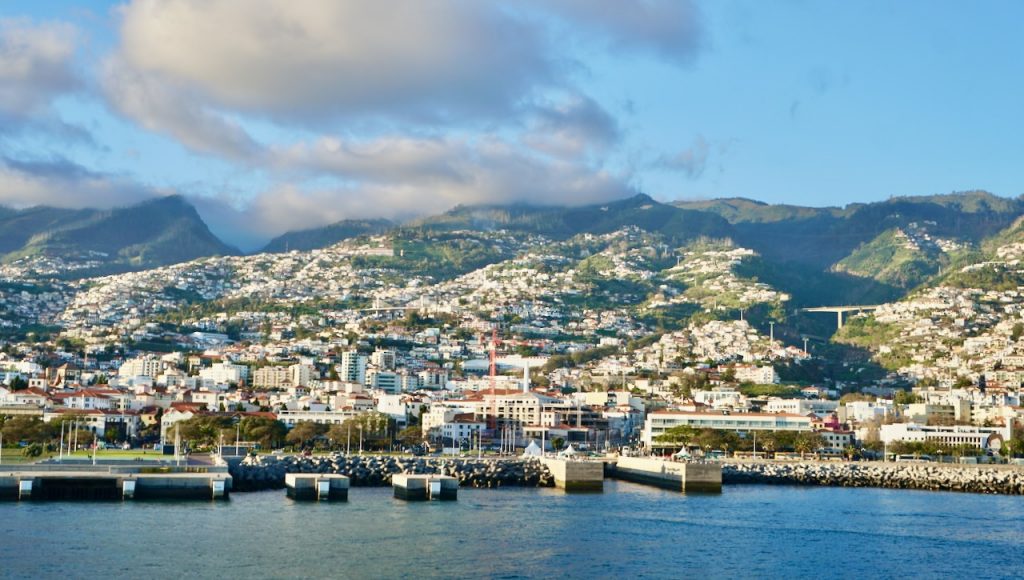
We landed at the port of Madeira’s capital city, Funchal. Tourism is Madeira’s largest industry. Though Madeira is a country of only a quarter million inhabitants, it was visited by 1.7 million visiting tourists in 2017. Thus, the covid pandemic caused extreme economic distress among hotels, restaurants, and other tourist-related employers. The Madeiran government provided aid to those citizens suffering from job-loss in the tourist industries. Thus our cruise ship visit was welcomed enthusiastically. The minimum monthly wage in Madeira is 723 Euros/month, which is much higher than Costa Rica and Panama, our previous most prosperous cruise destinations. Also, healthcare provided for free to minimum wage workers. I wish this were an American policy for our grossly underpaid American minimum wage workers.
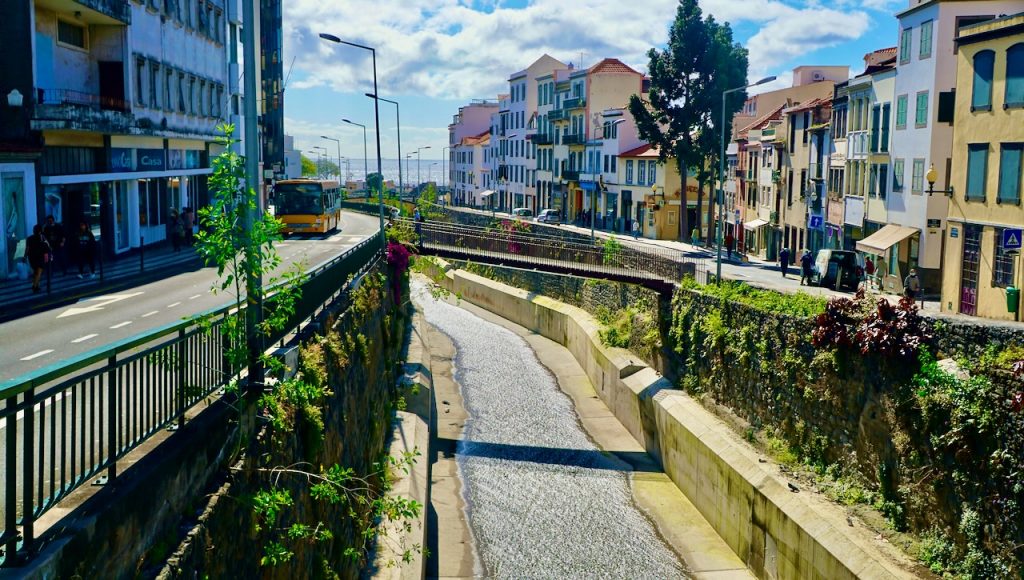
The name/word madeira means wood in Portuguese. Madeira was named the “island of wood” because it was totally covered with trees when it was first discovered. The climate difference between Cape Verde and Madeira is significant. Madeira receives much more rain, almost year-round, with only a few dry months. Thus, agriculture flourishes in Madeira. Bananas are the primary export crop, at around two hundred tons(!) of bananas exported each year.
However, the alcoholic spirit named after the island is Madeira is its most famous export. Madeira wine is a “fortified wine” i.e. red wine with additional pure alcohol added, in the style of Port wines produced in Portugal. But a different grape variety is used for Madeira than for Port wine. Madeira wine has been produced for centuries. (Portuguese explorers first settled in Madeira in 1440.) Vintage bottles as old as 140 years old(!) are in existence, costing many thousands of dollars/Euros per bottle. In the main street wine shop where Susan and I purchased a couple of five-year-old bottles (at ten Euros/bottle), there were vintage bottles for sale dating back to the 1940’s. We were told that madeira was the favorite beverage of our first president, George Washington.
The early Portuguese had African slaves early in Madeira’s history, who were forced to work in the banana trade. However, once the New World was discovered and colonized, those slaves were transported to Brazil to work on the emerging banana industry there. Thus we saw no blacks at all in Funchal, and there is no mestizo population as in Cape Verde. Madeiran farmers adapted by switching from bananas to sugarcane as their export crop. But again, New World countries soon overtook Madeira in its sugarcane production, the sugarcane industry declined. Sugarcane continues to be harvested in Madera. It is used domestically for Madeiran rum as well as “mel de cana” literally “sugarcane honey” which is known in English as molasses, and is the key ingredient of Madeira’s signature pastry, “Bolo de Mel” literally “honey cake.” On our city tour, we were offered a drink named Poncha, consisting of Madeiran rum, lemon juice, and honey. Poncha has twice the alcohol amount compared with Madeira wine.
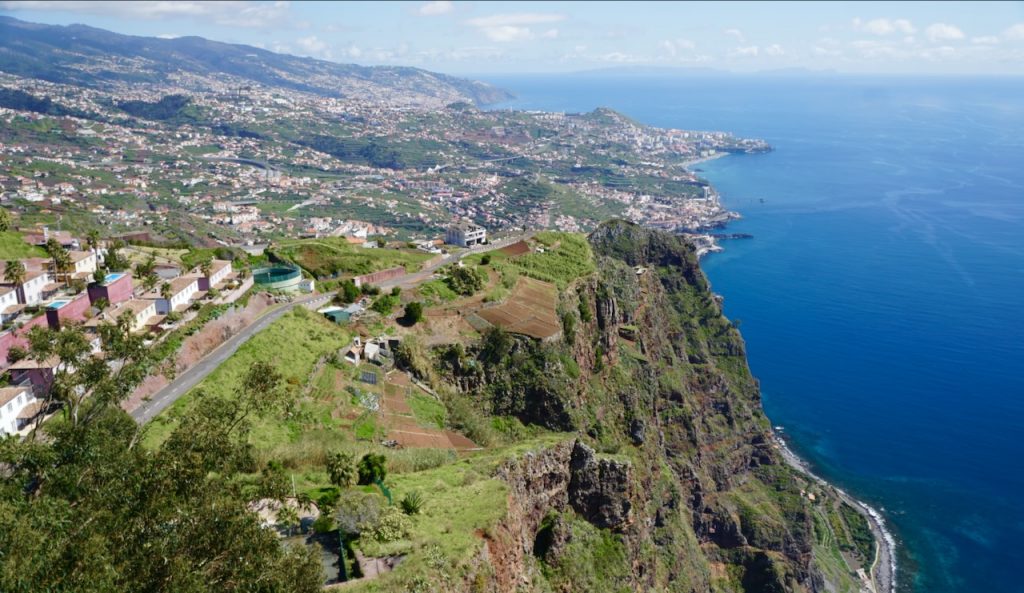
Our city tour took us to “the second highest cliff in the hemisphere” at 1900 feet above the ocean below. (They didn’t tell us what the highest cliff is.) The government created an overlook with a reinforced glass floor, allowing one to look down 1900 feet under one’s feet. A few fellow passengers became queasy looking down. I was unable to take a usable photo due to reflections from the sun overhead. On the way to the overlook, we passed many fields of bananas, as well as a lesser number of grape vineyards and sugarcane patches. These fields in between the residential areas are irrigated by an aqueduct system called “levadas” that was constructed over centuries to channel water from the mountains to the agricultural areas close to the coast. The landscape around Funchal is very steep. This means that all agriculture work (pruning, cultivating, harvesting, etc.) must be done by hand. The land is too steep for tractors and other agricultural devices to be used.
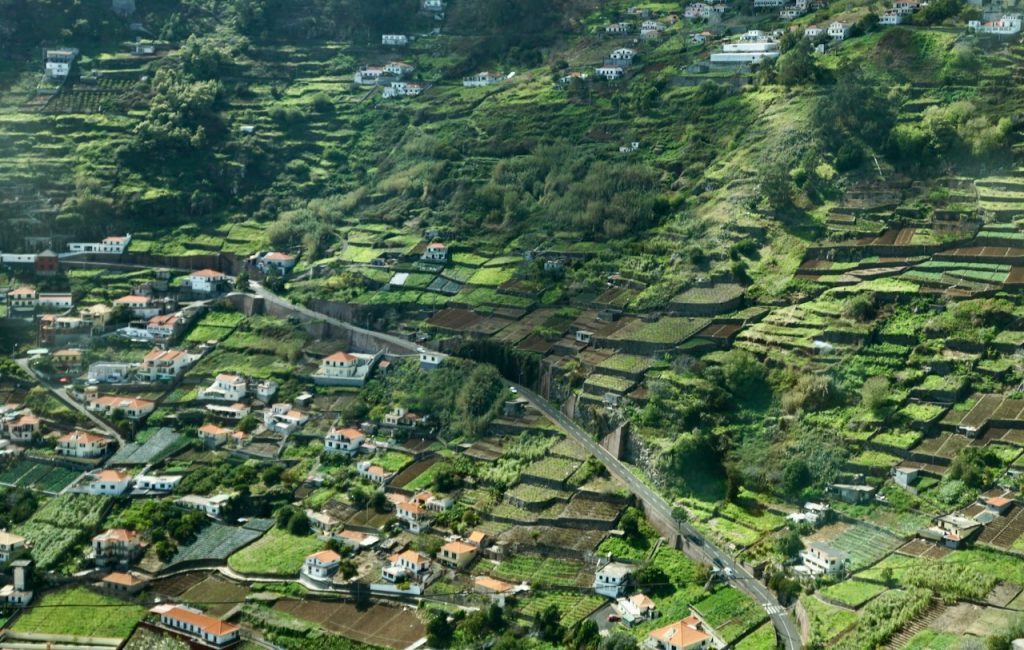
Funchal makes a very European impression. The Portuguese influence is very evident, from the presence of the characteristic blue tiles to the signs all in Portuguese, and the sound of Portuguese being spoken. The landscape is lush, with beautiful gardens and flowers. As in every landscape with high precipitation, every potentially bare piece of land is covered by green vegetation. Some of Funchal’s buildings reminded me of buildings in towns on the Italian coast. The pace of traffic was very leisurely. Cars gave pedestrians the right-of-way without a sense of impatience being shown by the drivers forced to wait for slowly moving pedestrian tourists. The sense of being welcomed by Madeirans was so evident, that Susan and I agree that this is our favorite port of call so far on our cruise. We could see ourselves returning to enjoy some days in Madeira (perhaps to be following by a week in nearby Morocco).
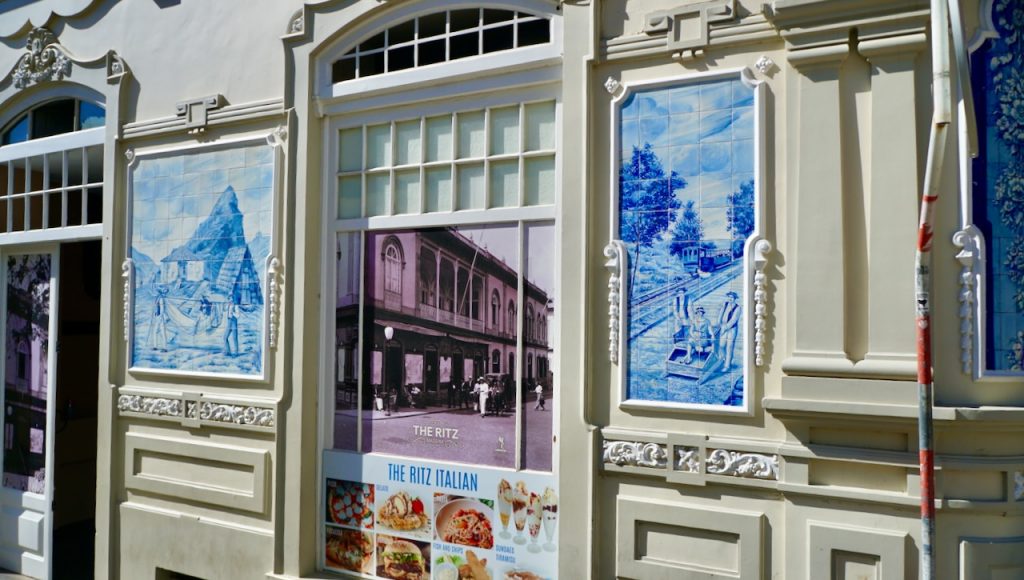
We are enjoying our world cruise immensely. But we are very aware that our short port visits (usually just a few hours) yield only a superficial introduction to these exotic destinations. We receive enrichment briefings prior to each port, informing us of each country’s history and current environment. A variety of different day tours are offered, always with one free tour, and several other optional tours that can cost as much as $200/person (when lasting all day and including a meal). We are constantly reminded that every country has a unique history, environment, and culture. These brief encounters at each port-of-call make us aware of how little we know about the world. But our desire for more travel is reinforced. Susan and I have tentatively booked a 2023 Viking cruise from Hong Kong to Taiwan to five ports in Japan, ending in Tokyo. I hope I’ll be able to write blogs such as this one for years to come. Stay tuned!
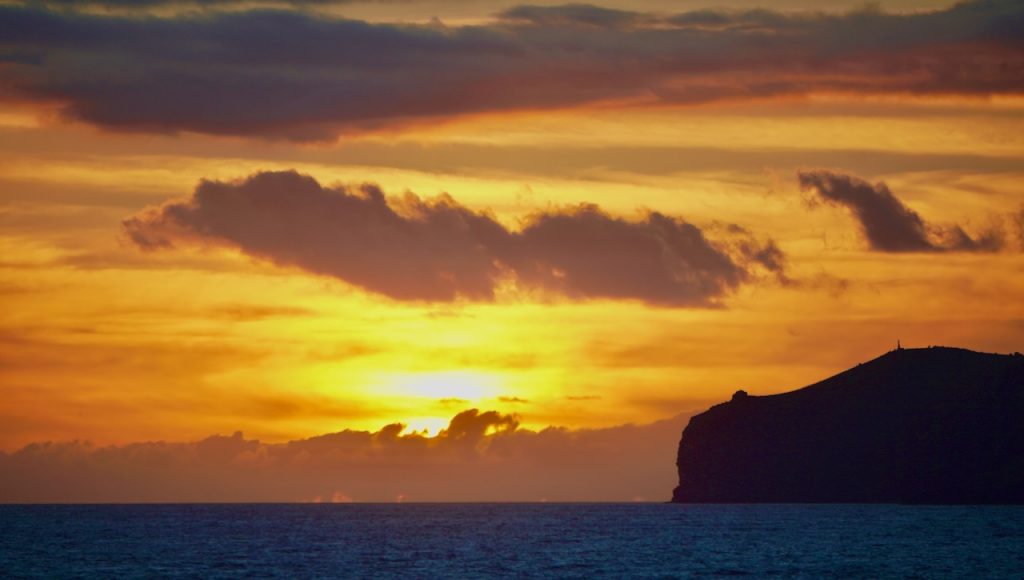
Below are four detailed photos from the stunning interior of the Funchal Cathedral. Madeira is 96{bf249dfdd09a1798812467d1b6a3ef7a33c47359bd28517191144d5320771815} Catholic.

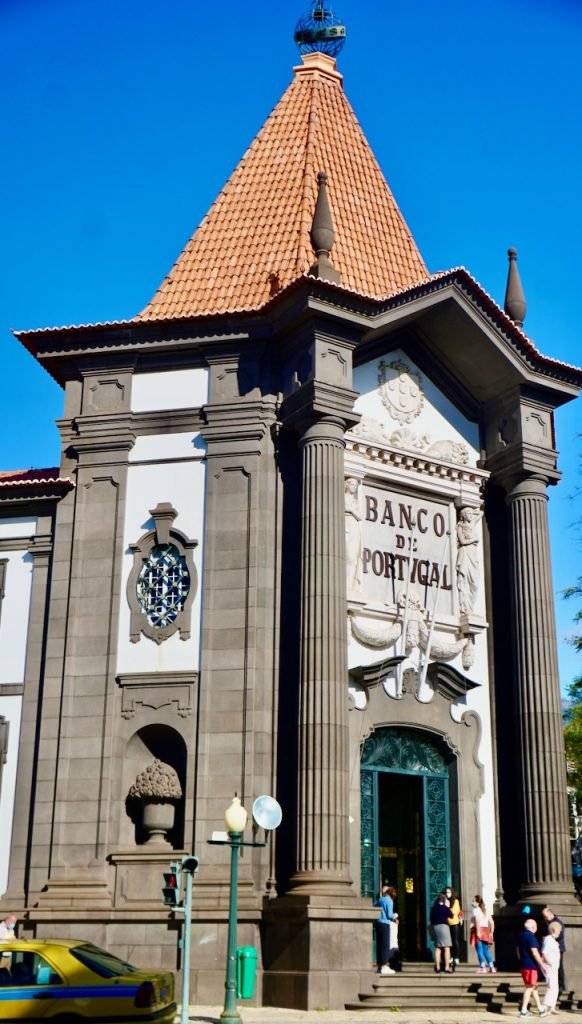
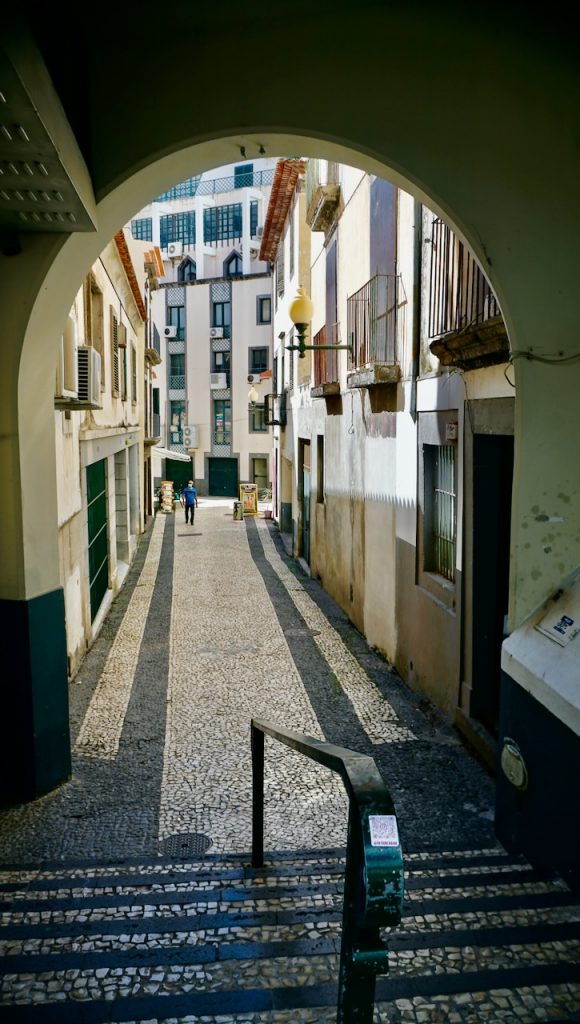

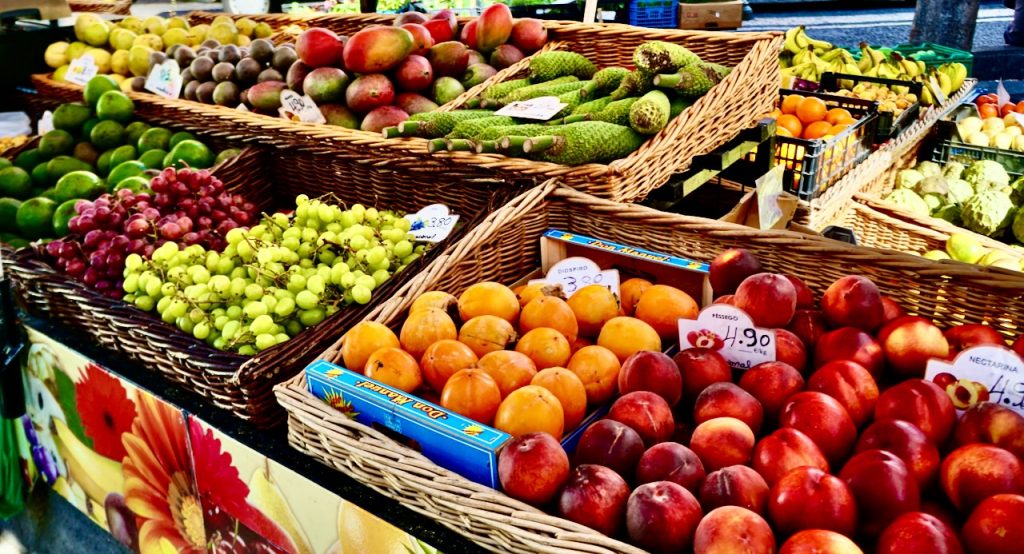
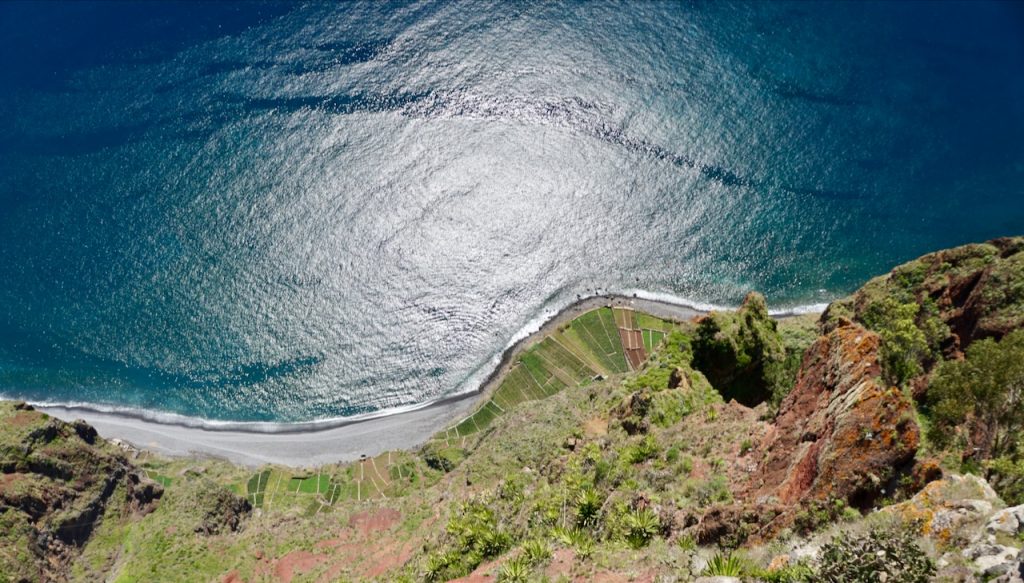

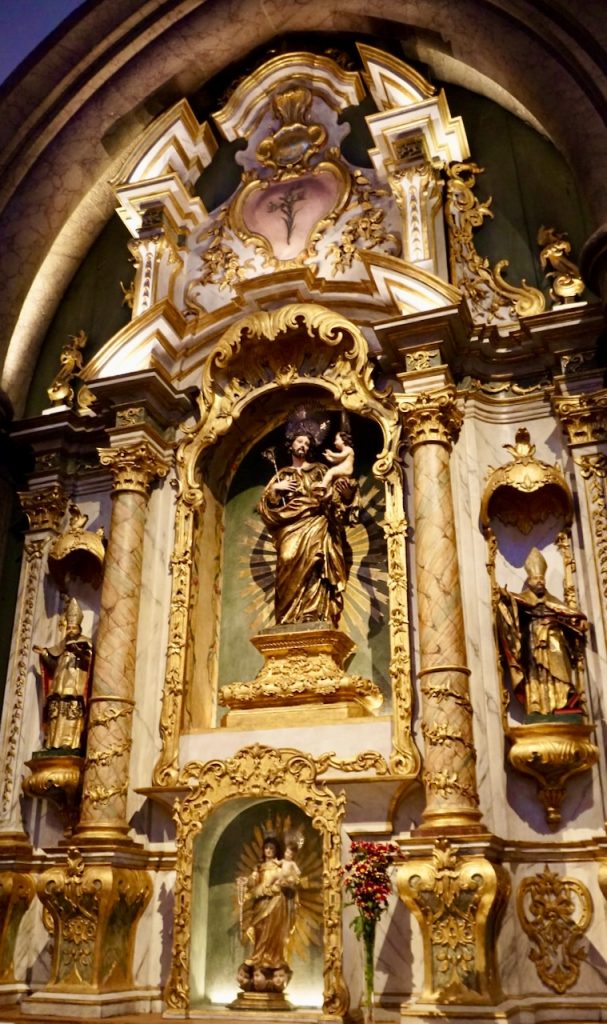
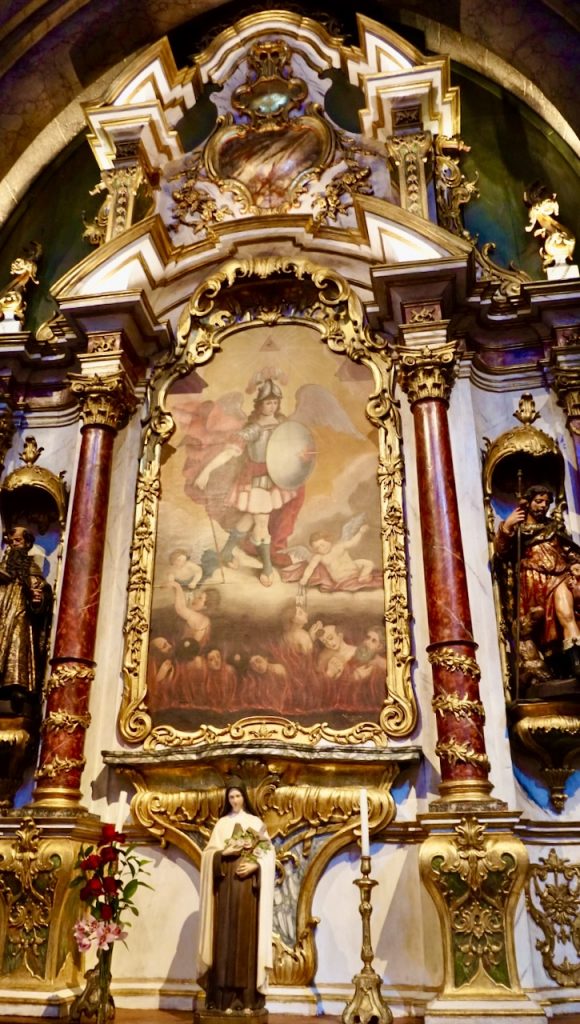
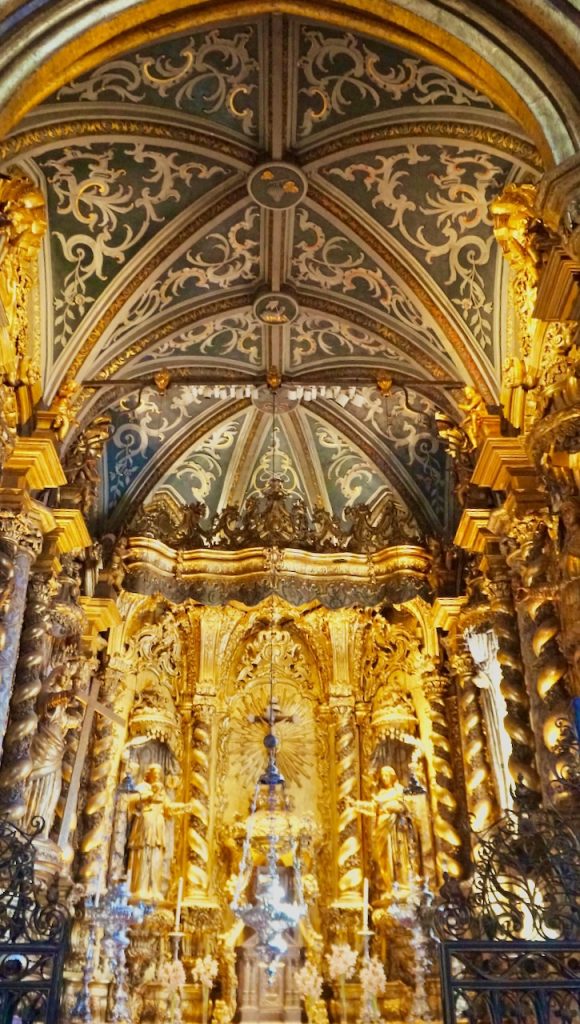
8 Comments on Madeira
Join the Conversation